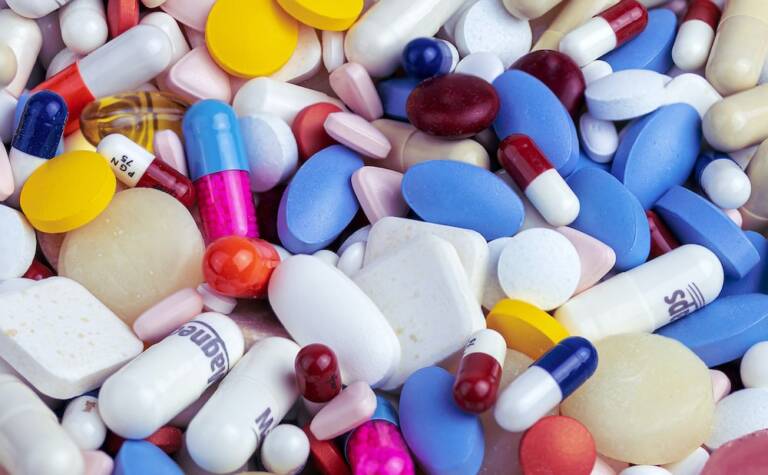Project Report For Pharmaceutical Manufacturing Plant
Introduction
Project Report For Pharmaceutical Manufacturing Plant is as Follows.
A pharmaceutical manufacturing facility is a method used in the pharmaceutical industry to mass-produce prescription medications. The manufacturing of pharmaceuticals can be separated into several unit processes, such as milling, granulation, coating, tablet pressing, and so on.
The pharmaceutical manufacturing Plant is a critical component of healthcare systems all around the world. It is made up of both public and private organizations that discover, develop, produce, and market pharmaceuticals. The pharmaceutical industry is primarily built on scientific research and the creation of medications that prevent or treat diseases and ailments.
Modern scientific and technical developments are hastening the discovery and spread of novel medications with enhanced therapeutic activity and fewer adverse effects. Molecular biologists, medicinal chemists, and chemists all work to improve medication benefits through increased potency and specificity.

Pharmaceutical Manufacturing Steps
In continuous manufacturing, raw materials and energy are fed into the system at a steady rate while output products are extracted on a continuous basis. The process performance is strongly dependent on the consistency of the material flow rate.
As the first stage in manufacturing, feeding powders consistently and accurately into the subsequent processes in the line is critical for powder-based continuous operations. Feeders are designed to deliver high-performance reliability, precise feed rate precision, and low interruptions.
Powder blending :- In the pharmaceutical industry, a variety of excipients may be combined with the active medicinal ingredient to create the final blend needed to manufacture the solid dosage form. The wide range of components that can be combined (excipients, API) introduces a number of factors that must be addressed in order to achieve the desired product quality criteria. Particle size distribution (including aggregates or lumps of material), particle form (spheres, rods, cubes, plates, and irregular), moisture (or other volatile substances), particle surface qualities (roughness, cohesiveness), and powder flow properties are examples of these variables.
Milling :- Milling is frequently used during the drug production process to lower the average particle size in a drug powder. There are several reasons for this, including improved homogeneity and dosage consistency, increased bioavailability, and increased therapeutic ingredient solubility.In some cases, repeated powder blending followed by milling is employed to improve the manufacturability of the mixes.
Granulation :- There are two forms of granulation: wet granulation and dry granulation. Granulation is the opposite of milling. Small particles are linked together to produce larger particles known as granules. Granulation can be used for a variety of reasons. It prevents the “demixing” of components in the mixture by forming a granule that contains all of the constituents in their required proportions, improving powder flow characteristics and increasing compaction qualities for tablet manufacture.
Hot melt extrusion :- Hot melt extrusion is used in pharmaceutical solid oral dosage processing to deliver medicines with low solubility and bioavailability. Hot melt extrusion has been found to disperse poorly soluble medicines molecularly in a polymer carrier. Heat, pressure, and agitation are used in the process to combine materials and ‘extrude’ them through a tool die. Twin-screw high-shear extruders combine ingredients while breaking them up. The resulting particles can be mixed and compacted into tablets or capsules.
Market Potential Of Pharmaceutical Manufacturing
The Indian pharmaceutical business was valued at $20.0 billion in 2019 and is predicted to increase at a CAGR of more than 6% between 2020 and 2025.
India was rated 3rd in terms of volume and 14th in terms of value in 2020. The expansion of the Indian pharmaceutical market can be attributed to R&D innovation, increased pharmaceutical export, infrastructural development, drug production, and strong local demand.
India has the world’s third-largest pharma market by volume, behind the United States and China, owing to its excellent manufacturing capabilities. India is the world’s largest vaccine maker and one of the world’s leading producers and exporters of active pharmaceutical ingredients (API) and generics.
India is a global leader in the production of generic drugs. Better-defined laws, as well as increased investment in R&D for innovative pharmaceuticals, are essential for India to become more competitive in the biosimilars business. In India, the leading therapy areas among commercialized and pipeline drugs are central nervous system (CNS) and infectious disease, respectively.
Pharmaceutical manufacturing is defined as the mechanism by which pharmaceutical corporations commercialize drugs on a large scale. Medication manufacturing services are defined by a basic commitment to meeting the user’s objectives with the greatest quality while making the best use of time and controlling costs.
The pharmaceutical sector has a reputation for being wary of new technology and sluggish to implement improvements. The pharma industry’s cautious stance stems from regulatory duties to ensure that any method changes do not have a negative impact on product quality.
However, regulatory agencies and the pharmaceutical sector are working to implement methods and techniques that will improve quality and production efficiency.
Project Report Sample On Pharmaceutical Manufacturing
Need Help?
Create 100% Bankable Project Report

